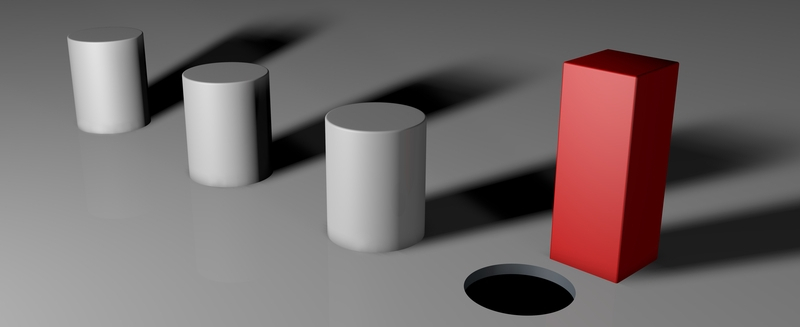Computer-aided design (CAD) is a wonderful technology that can lead product engineers and designers to think that anything is possible. After all, you can draw a complex part on the screen to perfection. What CAD programs don’t tell you is that the metal stamping process has limitations, as does the material itself. Just because you dream it doesn’t mean the part can be stamped out of metal to your satisfaction. That’s why metal stamping engineers want to discuss your part design as early in the development process as possible.
Recognizing the Effect of Material Selection on Metal Stamping Limitations
Metals come in different hardnesses and thicknesses. In precision metal stamping, the characteristics of the exact material will affect the finished part, such as the thickness that must be punched, the area for forming, the metal’s hardness and grain direction, and the spring back of the material when stamped.
Typical materials for metal stampings include:
- Ferrous and non-ferrous
- Stainless steel
- Aluminum clad copper
- Aluminum
- Titanium and noble metals
- Preplated
- Mylar
- Wire
Metal stamping engineers can help manufacturers select the right material for the part under development. For example, the engineers will evaluate whether the material you specify will perform to requirements when stamped or whether it may present problems in production such as cracking. If so, they will suggest alternatives.
Swapping Materials and Processes Doesn’t Always Work
Another common misconception is that a metal stamping can easily replace a molded plastic part or a cast metal part. Although it may is possible, the processes of molding, casting and stamping are completely different, as are the materials used.
One manufacturer asked that a complex part that had been molded in plastic be reproduced in the exact same form as a metal stamping. Despite the precision that can be achieved with metal stamping, the complexity of the part made the metal stamping process much more difficult and costly, involving multiple stations on the tool, rather than a simple form. Had the OEM been willing to make small changes to the part design, the cost of producing the part could have been reduced without compromising its function.
Understanding the Impact of Critical Dimensions for Your Part
Oftentimes, the manufacturer’s engineering department will submit the original part drawing with certain critical dimensions defined, but when the finished part goes to the OEM’s quality department for the Product Part Approval Process, the list of critical dimensions grows. The metal stamper needs to know all of the critical dimensions upfront so that they can ensure their production process will be able to meet them. Once the customized tool to stamp the part has been designed and built, it may be too late to address the critical dimensions in the tool without incurring additional costs.
Identifying the Right Dimensions and Tolerances
Another issue is specifying more critical dimensions and tighter tolerances than are actually needed or desirable. A broader range of tolerances may be sufficient, depending on the part and its assembly. Here again, CAD may be part of the problem, as the software may default to a certain number of decimal points, which may be too tight for high-volume production.
According to the Precision Metalforming Association’s Design Guidelines for deburring, “The common specification ‘remove all sharp edges and corners’ is seldom appropriate, and deserves special mention. To literally remove all sharp edges and corners from a part is usually an excessive requirement, and is therefore not cost effective. The knowledgeable designer specifically addresses the actual need by indicating only those areas of the part that require a specific edge condition to meet subsequent functional requirements.”
Here, too, the part design may be modified to perform better if the corner of the part is specified as too sharp, resulting in a dangerous edge.
Designing for Manufacturability in Metal Stamping
The key to success is design for manufacturability (DFM) in light of metal stamping’s limitations.
When the manufacturer first submits the print for an estimate, the metal stamping firm should involve its quality, engineering, tooling and production teams to review the production parameters and print details.
A robust DFM review process requires the metal stamper to:
- Review customer specifications, the industrial application of the part, and its expected useful life
- Incorporate statutory or regulatory requirements and specific customer requirements such as cleanliness for medical devices
- Determine the customer's desired run-at rates
- Plan for secondary operations
- Address any unusual risks identified
- Review the print in depth and determine if revisions are required
- Evaluate the material and its characteristics
- Ensure that correct tooling parameters are established from the outset
- Define control plans
- Determine final assembly and packaging requirements
Proving Manufacturability with Prototypes
If the collaborative DFM process raises serious concerns about the part’s manufacturability, producing a prototype may be a wise move. Although it takes a bit more time and expense, prototyping can ensure the long-run viability of the part design and the tool needed to produce it. The metal stamper should have the capability to build a prototype tool and employ simulation software to evaluate how the material and the part will function in the tool. If the simulation reveals weak spots, the part or the tool can be redesigned to improve manufacturability, which can save time and expense in the long run.
When OEM engineers understand the limitations of metal stamping and design their parts accordingly, they are in a better position to benefit from metal stamping’s advantages, including the potential to save money, time and materials.


